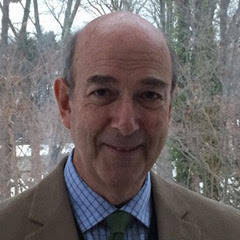The “Red Meat” Philosophy
Of all Newsday‘s investments after winning the 1954 [Pulitzer Public Service] prize, the best might have been the hiring of Robert W. Greene to run investigations for the paper.
Bob Greene was a born snoop. He had been involved in some type of investigation work since high school, when he was employed as a “sniffer” for a department store, checking out the underarms of fancy dresses that women bought and later returned. His olfactory test proved whether a woman had worn the garment to a party before bringing it back for a refund….
A lover of good food, who weighed in at more than 300 pounds, Greene liked big expense accounts almost as much as he loved big stories. But because Greene turned up dirt in abundance wherever he went, managers tolerated the size of the invoices he submitted. He was Newsday‘s version of Eliot Ness: untouchable….
Instead, he devoted time to selling them on story ideas. Given a few minutes of preparation before talking to an editor, Greene usually found a way. He employed what he calls “the red-meat philosophy,” a sure-fire way to win over editors who needed persuading about a story. It worked like this: “You get something really good, and you say, Here’s what we have already. That’s the red meat. Then you say, If you give me time, I can get more. Editors get comfortable if you’ve got something in your pocket already.”
His Suffolk proposal started with the meat of what they knew already: a Newsday editor, now deceased, had been involved in suspect deals in the county. Greene promised that he could prove a bigger scandal. From that small start, the first “Greene Team” soon sprouted.
Working through the Suffolk office of the Garden City-based paper, Greene combed through deeds and mortgages, creating paper trails that appeared to lead to various dirty officials. Greene also had a secret source with the federal Internal Revenue Service. The source, whom he nicknamed Zip, steered him toward more irregularities. “I’m saying, ‘This is coming along pretty good, but I need more people to help me,” Greene recalls. “They gave me one, and then one more.” News clerk Gerry Shanahan was assigned to the team and became a Greene favorite.
Greene found that he liked leading a crew of reporters, and had a knack for teaching his investigation techniques and interviewing styles, unorthodox though they often were. His information-getting lessons started with a piece of advice: Do enough research so it appears to the interviewee that you already know the whole story. “I like to think I know about 80% of the answers before I sit down,” he says. Then the subject on the hot seat asks, “Who squealed?” The corollary to this philosophy: “The minute you start asking questions like you don’t know the answer, they lie to you.”
Shanahan, now assistant foreign editor at the New York Times, got her reporting education from the Greene Team. Reporter Kenneth Crowe showed her how to root through documents. “Sometimes you didn’t even know what you were looking for, but you’d know it when you found it,” she says. “These people had dummy corporations. There was so much land, and they were chipping in together and buying parcels, and then would re-zone it so it would become much more valuable. Then they’d sell it.”
The Greene Team’s first investigation turned up companies that were part of an Islip re-zoning scam by officials…. The work was entered for a Pulitzer Prize in 1968. It lost. In October 1968, two of the officials netted in the Islip investigation were convicted, and similar disclosures by the team were made involving the town of Brookhaven. In 1969, Newsday entered again. Again, it lost.
Sayonara, Indeed
But the team—which occasionally used the name Greene’s Berets, after the crack Army unit in Vietnam—was hardly finished. Greene and his crew found that the Islip and Brookhaven investigation formula could be applied in most other Long Island towns, with the same result.
In 1969 they turned to reports of corruption involving three leading lights of Long Island: state Supreme Court Justice Arthur Cromarty, a major Republican Party leader; Nassau County state Senator Edward Speno; and Babylon Republican leader Fred Fellman. Tony Marro, a Vermonter who had joined the paper in 1968, was added to the team.
“I knew very little about the team,” says Marro, who eventually became Newsday‘s editor. “It was supposed to be an eight- or nine-week assignment. I was basically gone for three years.” He learned fast, a requirement in any Greene-run shop. “It was total immersion. You were locked up with a small group of people. You got assignments every day. You had to report what you did every day, and you had to read everybody else’s reports.” The intense process often produced stunning findings, since few details of the entire three years of investigation ever got totally lost.
Food was often at the center of the job for Greene, a man of at least 350 pounds for much of his career. As Marro puts it: “Ken Crowe taught me the difference between a mortgager and a mortgagee; Greene taught me the difference between chicken Kiev and chicken cordon bleu.” His reporters believed that he owed his considerable girth to his taste for eating only the best that restaurants had to offer. The story is told of the boss hosting one group lunch and interrupting a new reporter as he was ordering the Salisbury steak. “When you eat with the team,” Greene scolded, “you don’t eat chopped meat.”
Greene sometimes used reporters as foils during interviews, and he often bluffed. Shanahan remembers a Greene interview with a county judge whom a Newsday source had accused of taking bribes to fix zoning decisions. “Greene wrote on a manila folder, ‘Tapes’—and had the subject’s name on them—to let that guy think we had something.” Greene recalls that he had actually made up a reconstruction of what the tape of a conversation about a bribe might have sounded like, complete with background sounds of babies crying and screen doors slamming. He then packaged those tapes up as if they were the real thing, and laid the package on the interviewee’s desk. “His hands were shaking,” recalls Greene. “Then I said, ‘Did you know this guy was very much into electronics?’ Now he’s in shock; he’s reaching for his water glass.”
Says Shanahan, “He got the truth out of that guy.”
If he had 80% of what he needed before the interview, that last 20% was often crucial. It was the part that implicated others. Greene tells the story of meeting Babylon Republican leader Fellman at a place named, appropriately enough, the Sayonara Motel. They caught Fellman off-guard when Greene spread out six folders on the hotel-room floor. Each contained incriminating documents. He then gave Fellman the choice of admitting his involvement in “three from Column A and three from Column B,” in a way that might save him from paying the heaviest amount of back tax. “Bob, can I have it all?” Fellman asked.
“Off the Droshky!”
The Fellman case illustrated an interview technique that Greene’s Berets called “off the droshky.” The term came from a Russian fairy tale. As Tony Marro described it:
There are many different versions of this story, but they all have the same unhappy ending.
It starts with a family—father, mother and several children—traveling through the woods on a cold winter’s night. They’re riding in a Russian sleigh, which is called a droshky. Suddenly, a pack of starving wolves comes rushing out of the woods and begins to give chase. The horses try to race away, but the wolves keep getting closer and closer. The family becomes frightened, panicked, and desperate. Finally, to save the others, the father throws the youngest child off the droshky, into the jaws of the wolves.
The Greene Team was the wolf pack. When someone like Freddie Fellman admitted to fraud or implicated Judge Cromarty, it was a case of Fellman throwing something off his droshky. “It was always a moment of celebration when a reporter would come back from an interview, give a thumbs up to the rest of the team, and announce: ‘Off the droshky!’” according to Marro.
While the information from Fellman tarred Cromarty, prosecutors ended up hitting the judge far more gently than they hit Fellman, who eventually went to prison. “We didn’t like it that way,” says Greene, since Fellman had cooperated with the team. “But there was huge juice protecting Cromarty.” The investigation had produced enough good graft stories and convictions, though, for another try at the Pulitzer.
The third time was a golden charm for Newsday. Bill Moyers, who had become handy at writing the publisher’s cover letter by that time, was able to note in 1970 that the investigations had led Governor Nelson Rockefeller to form a special commission on ethics. The Pulitzer jurors ranked Newsday first “for exposing secret land deals and zoning manipulations by public and political party office holders….” The Board agreed, adding to the citation the element that the paper’s work followed two earlier years of investigations. It was Newsday‘s second Gold Medal, and the first for a Greene Team project….
Newsday saw the 1970 Prize as honoring all three years of investigation, as the Pulitzer citation noted. It partied three times in celebration. Even one of the crooks it had exposed, Freddie Fellman, showed up.
Greene says that Fellman probably had no idea then that the Republicans had made a decision to toss him from their own droshky—and to protect Cromarty instead. At the party, Fellman lived up to his reputation as a big talker, taking the floor and catching the attention of the assembled journalists. “Wait a second,” he said to the surprised revelers. “You couldn’t have done this without me!”
Long Island was just that kind of place. Says Greene: “He was a crook, but I liked him.”






